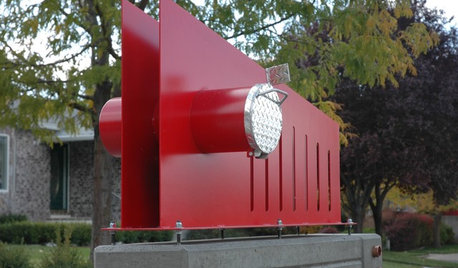More seedlings than ever
Iris GW
15 years ago
Related Stories

FLOORSHow to Get a Tile Floor Installed
Inventive options and durability make tile a good choice for floors. Here’s what to expect
Full Story
FIREPLACESRumford Fireplaces Are Hotter Than Ever
Higher efficiency and good looks are leading homeowners back to this 18th-century fireplace design
Full Story
FURNITURE6 Decades-Old Designs That Look Better Than Ever
After getting a few nips and tucks, some favorites from the ’60s and ’70s have made a stylish comeback
Full Story
COLOR8 Ways to Rev Up Your Garden Color With More Than Just Plants
Bring energy and excitement to your outdoor space by going bold with color, from small touches to big changes
Full Story
GARDENING GUIDESSeeds or Seedlings? How to Get Your Garden Started
Growing delicious herbs and vegetables starts with knowing your goals and when you want to plant
Full Story
MOST POPULAR40 Dogs Who Are Having a Way Better Summer Than You
Houzzers share pics of their canine companions living it up — or getting down with relaxing — on warm days
Full Story
SMALL HOMES28 Great Homes Smaller Than 1,000 Square Feet
See how the right layout, furniture and mind-set can lead to comfortable living in any size of home
Full Story
BEFORE AND AFTERSA ‘Brady Bunch’ Kitchen Overhaul for Less Than $25,000
Homeowners say goodbye to avocado-colored appliances and orange-brown cabinets and hello to a bright new way of cooking
Full Story
BUDGET DECORATING9 Tricks to Boost Your Home’s Appeal for Less Than $400
Whether you’re redecorating or just doing a quick update, check out these ways to enhance your home on a budget
Full Story







razorback33
pam_3
Related Professionals
New Bedford Landscape Architects & Landscape Designers · Wrentham Landscape Architects & Landscape Designers · Saint Matthews Landscape Architects & Landscape Designers · Winder Landscape Architects & Landscape Designers · Cambridge Landscape Contractors · Centereach Landscape Contractors · Cupertino Landscape Contractors · Mesa Landscape Contractors · Yukon Landscape Contractors · Berkeley Fence Contractors · Charlotte Fence Contractors · Kuna Fence Contractors · Oldsmar Fence Contractors · Zachary Fence Contractors · Brooklyn Window Contractorsjmzms
vicki7
turkeytaker
Iris GWOriginal Author
woody_ga
stevega
Iris GWOriginal Author
Iris GWOriginal Author
pam_3
stevega
Iris GWOriginal Author
stevega
Iris GWOriginal Author
mayland
sarah27
Iris GWOriginal Author
rosiew
Kathy Bochonko